Today, we’re talking with Android Jones, an American artist whose work is featured on our new Android Jones Collection covers.
Android has been working professionally as an artist for his entire adult life, and his work has been featured on album artwork, magazine covers and even clothing and apparel over the years. A member of the Burning Man community, Jones calls himself an “electro-mineralist” and is renowned for his multidimensional, spiritually driven art and performances and the altered states of consciousness they evoke. A true art renegade, Android and his work sit at the sharpest edges of our culture as we try to make our way into the future while honouring our past.
Android recently took the time to chat with us about his passions and inspirations, as well as the story behind the art that has become our two Android Jones journal covers. For more on our Android Jones Collection, please visit our collection page at www.paperblanks.com.
About Android Jones
Name: Android Jones
Place: Colorado, United States
Education/Training: Went to Boulder Atelier of Fine Arts out of high school. Graduated with Bachelors in Fine Arts, Computer Animation from the Ringling School of Art & Design in Sarasota, Florida
Occupation: Full-time artist, ever since
Creative Works: Androidjones.com
Social Media: Facebook, Instagram
1) We are excited to be releasing our Android Jones Collection, featuring two of your artworks. Have you had your art reproduced on a book cover before?
I’ve had my art on the covers of different books, but never on a book that is meant as a journal or sketchbook. I’ve had my art on the cover of Spectrum and different magazines around digital art and music. But this is the first time it’s been on an empty book.
2) What appealed to you about collaborating with us on this new type of direction?
Well, a lot of different things. In particular, when I think of the things in my life that are valuable to me, and as a digital artist I work with a lot of new technology, the one thing that has remained constant since I was a child was keeping a sketchbook. I have an entire bookshelf filled with the sketchbooks that I’ve kept since I was ten or eleven. Looking back, the pages that I’ve filled out in these sketchbooks and journals are some of the most valuable art objects that I’ve created.
Being able to have the potential to be part of the journalling, memories and creation of other artists, and have my art included in their future bookshelves and libraries, I think that’s a very special thing to share that sort of moment with the people that are going to be creating all their new art and memories inside of them.
3) Your art is described as a “Electro-Mineralism” – not exactly an art term that people are familiar with. What exactly does that mean?
Well, people aren’t that familiar with it because I made it up!
I’ve always found the best, quickest way to be at the top of your class, is to make up your own class. You know, “in the valley of the blind, the one-eyed man is king” … I made that name up several years ago. Throughout my life I’ve been an artist that evolves through cycles of all different mediums, from crayons to coloured pencils to markers to acrylic to chalk to conté to oil paints. I had background training as an academic painter. My first job was drawing portraits of people on the street using charcoal.
My journey has followed a trajectory through all the major mediums that have been available to artists. Around 1996 I encountered my first Wacom tablet when I was in art school. I became captivated by that. My favourite artists, the ones I grew up admiring (the Leonardos and Michelangelos and M.C. Escher), when I looked back at where they were within their contemporary settings, I started realising all these artists were using the most technologically advanced art supplies that were available to them. They didn’t have any sort of attachments – they were always trying to push the boundaries. So, to follow in those footsteps, I decided to make the same decision and use computers and tablets, and now it’s VR, to push the limits of what I’m capable of as an artist.
The term “digital artist” or “digital painter” seems to be a term that a lot of people use to classify more or less the genre that I’m in. I’ve just always felt like that term was lacking a little bit of definition. It was a very vague term. When I really started thinking objectively about what is this medium that I’m using – [I realised] the main medium that I channel all this creativity through is really electricity. Everything that I do with the Wacom or laptop or at VR, it’s all channelling electric currents.
A lot of artists define themselves off the medium – and when I look at the medium, well, part of it’s electricity. And if you look at your laptop or your phone or your iPad, and you start taking it apart, you’re going to find silicon and magnesium and quartz crystals. The large majority of the objects that are channelling the electricity are made out of a combination of different earth elements and minerals.
So, it seemed kind of natural. Instead of being a “digital artist,” “electro-mineralism” is a more granular definition, a more precise definition, of what the medium is that I’m actually using. Electricity and minerals are how I make art. So – electro-mineralism.
That’s really cool. With people that are more analog artists, you don’t say “analog art” versus “digital art.” You classify it by oils or other mediums, so it’s nice to be able to break down digital art in the same way.
It’s an open classification. Anybody that wants to be an electro-mineralist, join me! It’s a wide-open genre – with a lot of space.
4) It’s interesting that you mentioned VR as the next frontier. On your website and things you can find online, you incorporate a live performance element. I guess that sort of connects to what you’re doing in VR as well. How do you take something from the screen and make it a live, visual performance?
The medium that I’m using translates really well toward projectors and live venues. I’m a huge fan of music and concerts. For the past 15 years, I’ve worked a lot within the entertainment industry, specifically music festivals like Burning Man and international trance festivals. I got into them around 2003 and I realised rather quickly that these were venues and opportunities that could take advantage of every ounce of creativity that I had. I was also exposed to a variety of all different artists of different disciplines – dancers and musicians and electronic music producers and sculptors – and it was an environment that I was really attracted to, to be within a community of multi-disciplinary artists. I got into it because, honestly, I just liked the people I was hanging out with and I wanted to add value and be part of a larger community.
But I think that the reason why I thrived within that particular environment was that as an artist, when you’re working, the majority of the art that I’m making is based in a solitary place. A lot of times I need a lot of space and quiet to focus and concentrate. I think a lot of artists can identify with a lot of solitude and isolation, but you’re also really detached from the impact that the work that you’re doing is having. There’s a really delayed reaction between finishing a piece and seeing it as a piece that people connect with or have an affinity with.
I found that the live shows gave me the opportunity to interact and see the direct impact of the work that I’m doing over a live audience of hundreds, to thousands, to tens of thousands of people. There’s a lot of adrenaline; there’s a rush that happens. I think that seeing art when it works (and it doesn’t work all of the time – there’s a lot of failing and a lot of misses) – when all the pieces work and everything’s in the right place, it’s a really exhilarating feeling. There’s a vulnerability that you encounter when you’re up on stage and there’s no net and there’s tens of thousands of people watching what you’re doing.
Going with electro-mineralism, it feels like in those live moments there is an electric current that you tap into when you really have the audience on your side and they’re with you in that moment of creation. It’s live, it’s real time, it’s spontaneous. They don’t know where you’re going next, and you don’t know where you’re going next… You can really take a whole group of people on a journey together. There isn’t another experience that can match what that feels like when all the pieces are working.
Interesting that you’ve mentioned the festival atmosphere – that’s actually how we discovered your art. One of our team members was at a festival and was totally taken by your work and brought back some of your lenticular artwork and the rest is history! So, we definitely understand you about connecting that way.
Definitely. It’s a great way to expose yourself to new people and new networks and make other connections. My life is sort of on the road and those environments do motivate and push you to always reach deeper.
At every show I want to make sure it pushes me to create new content. My job is to, when I’m doing visuals for a big band, like a Bassnectar, I’m tasked with the opportunity to blow everybody’s minds. They have an amazing recovery rate of regeneration and every time they want their minds blown again. You can’t use the same trick every time. It really pushes me a lot to iterate and innovate and to create new content and work with new mediums. I found that VR feels for me like a new pinnacle of an opportunity to let people experience it. It’s the best medium that takes full advantage of all the different skills that I’ve developed over the last few decades. That’s something that’s an exciting opportunity.
Do you wear a go-pro at your shows or something? Or are the shows filmed and then it’s put together for VR?
I’ve done different things. Usually for a lot of the shows I’ll connect my laptop to a projector or LED screen and I have different pieces of software that I’ll manipulate live on my Wacom tablet and I create visuals. Every show has a lot of different specifications and software and hardware that is used. But my goal is to act as a medium. I am trying to interpret the music at the best of my ability to give a visual presence and a complement of the music that’s being played. I try to induce a state of – well, as close as I can – synesthesia. I want to help the music inhabit a visual space. All the work that I do, it’s all real-time, in the moment, kind of having strokes and matching the beats and the tempo. Obviously, it’s very subjective, but I do my best to act as that sort of translator between the musician and the audience. Collectively we create a more convincing container and experience where everything feels like it’s connected together.
5) In terms of the two pieces that we’re working with, “Dharma Dragon” and “Revolution,” can you give a little background on these works and what they mean to you, or what inspired them?
“Dharma Dragon” was created in 2012. I was at one of my favourite festivals that I’ve been going to since 2010. It’s the Boom Festival in Portugal. It’s one of the world’s largest – it’s a 35,000-person festival that focused on psychedelic culture and trance music. It has music from all around the world, with an emphasis on psytrance and world music. It’s a really close community that I’ve known over the years.
Every year they have me out and it’s kind of a tradition. The festival goes on for nine days and they actually create a newspaper that they distribute to everyone. Dharma Dragon is the name of the newspaper. For the past few editions, I’ve been making the cover for it. The ritual that’s been happening lately is that I get up there a few weeks early and get to the festival as they’re building it and take a cultural inventory of everything that’s going on. That year they had asked me to create an image of the people that go to Boom Festival, they call them “Boomers.” The challenge was to create an image of the “Universal Boomer.” The festival’s attended by people from all around the world. There’s 52 different countries represented. All different backgrounds, cultural backgrounds, spirituality, languages, dogmas… So, it was imagining what kind of being, or entity, would be something that would have little touch points or connections with a vast array of different spiritual archetypes, so that everyone could see some aspect of their own culture reflected within. I created over the course of four days, and just binged. I focused on working on that as many hours as I could be awake during the day. So that was a fun process. It came together really quickly.
The “Revolution” piece, that was made for the cover of a visual art magazine called ImagineFX. They reached out to me to create a cover for that magazine. I believe that the focus of one of the articles was about the “digital art revolution,” and I worked really closely with some of the different software developers that I’d developed a relationship with. The people at Corel Painter – one of my favourite digital painting softwares – they had just come out with a new version of Painter at the time. Magazines, most of the time, do the art direction from their marketing department. Human beings have a portion of our brain that’s reserved for being able to recognise faces and connect with different faces. So, they wanted a female face, and I wanted to create an image that I felt really pushed the capabilities of the software that I was using. It was really dynamic, using a lot of patterns and colours and geometric lines to make it a unique and engaging image.
6) Do you have any advice you might share with aspiring artists?
Lots of advice! So many things… When I think over the course of the years, there are many things that I know now that I might have been better off knowing earlier. A lot of “oh wow” epiphanies.
Maybe a lot of people understand this already, but [this is] something that I’ve learned within the past five or six years that’s had the largest impact in how I make art and why I make art and has impacted the type of art that I make on a fundamental level. It’s the understanding that through most of my career as an artist – and I think a lot of artists may identify with this – it’s easy to get really focused on the object, on art as an object. Art as a picture that’s on the wall or something that’s on the cover of a book or a magazine. The technical aspects of it, the details, the colours, the techniques that we use… that’s kind of our lifeblood. We really like those sorts of parameters. But the thing that I’ve found, that I came to realise, when you’re creating art (and you want to have some type of success with being an artist), the most important thing to understand and to be in touch with is – regardless of the object that you’re creating – what is the experience that people are receiving when they see your art? That’s really the crux.
If an artist wants to support themselves, then they really need to start understanding what kind of experience they’re intending to give somebody when this person sees the artwork. It’s really the experience that everybody is after.
When somebody buys a sketchbook, they’re not really buying a sketchbook. They’re buying the future potential. They’re buying the experience of a future version of themselves being able to jot down ideas or drawings or notes whenever they want to. They’re buying the experience of that freedom to journal or transcribe or make images on the train or in an airport. They’re not really buying a sketchbook, and it’s the same with art. People buy art and support art because it’s an experience that is valuable to them.
Focusing on the experience goes both ways. What’s my favourite thing about art? It’s not the pieces that I create or the body of work that trails behind me. All the work that I’ve created is just the residue of my passion and dedication towards the experience of being creative. My favourite thing is the experience of what it feels like when I’m making a piece of art. That’s why I’m here. That’s what drives me. And that’s what keeps me doing what I’m doing – I’m hopelessly addicted to the experience and the neurochemicals that are released in my brain when I enter into a flow space and I’m creating something I’ve never created before. That’s the juice that really motivates and lubricates all the other decisions in my life.
As an artist, whatever your technique is, whatever you’re doing, I really recommend that any artist focus on making that experience as rewarding as possible. If there’s anything you can do to get even more joy out of it, then do that. But realise that it’s really the experience that is the payoff. You think that it’s going to be the recognition or the fame or the money or the accolades or the awards – but those are all really distractions. At the end of the day, it all comes down to the experience that you have making art.
For a lot of artists that are successful, the experience of making art is so passionate and so palatable. If you’re able to communicate how amazing that experience of making art is into the piece of art – most likely people will be able to connect with that. You always want to be aware of the kind of experience you are giving people. If you’re not giving them an experience that they find valuable, then it’s going to be really hard to support yourself making art. Because it’s all about the experience that your art gives – not what it looks like, not how detailed it is, not the colours, not the fancy medium. That’s all noise. It’s all about the experience.
I think that’s just awesome life advice, too. So often you get caught up thinking about the end result of something and you’re not enjoying yourself along the way. And generally, the result you do end up with is half-hearted or not inspiring in any way.
Oh yeah. Everything I do – all the deals that I make – the entire business model that I have created around me, it’s all just a way to enable me to buy back more of my own time so I can be creative as much as possible. That’s the goal. That’s what I’m going for. If I can do what I want to do and follow my own heart and make the art that makes me feel the most alive, that’s what it’s all about.
But while doing that, the reason why I’ve been able to support myself thus far, is that I’m also in touch with the type of experience that I think people find valuable and have created art that serves an experience that people want or need or are looking for in their lives. Because for artists, it’s not just about us. We’re not just doing this to entertain ourselves. It’s about being a service to a higher goal. A service to people – your family, your community and the world.
It’s a huge privilege to be an artist. It’s an amazing opportunity. And I think if more artists can understand that it’s really about how you can create valuable, meaningful experiences that other people can grow from, and help them wherever they are in their lives, then that’s a great strategy for a sustainable creative career.
Both sustainable in terms of your own joy and in reaching a broader audience.
Exactly.
Thank you so much for talking to me.
You’re welcome! Thanks so much, we’re really excited. There’s so many artists that you could choose and we’re really delighted about these journals.
Find the Android Jones Collection in Stores
For our “X Questions With” series, we’re speaking with talented individuals from around the world who have inspired us with their creativity and passion. If you have a story to tell or someone you’d like to see profiled, let us know in the comments or on Facebook, Instagram or Twitter!

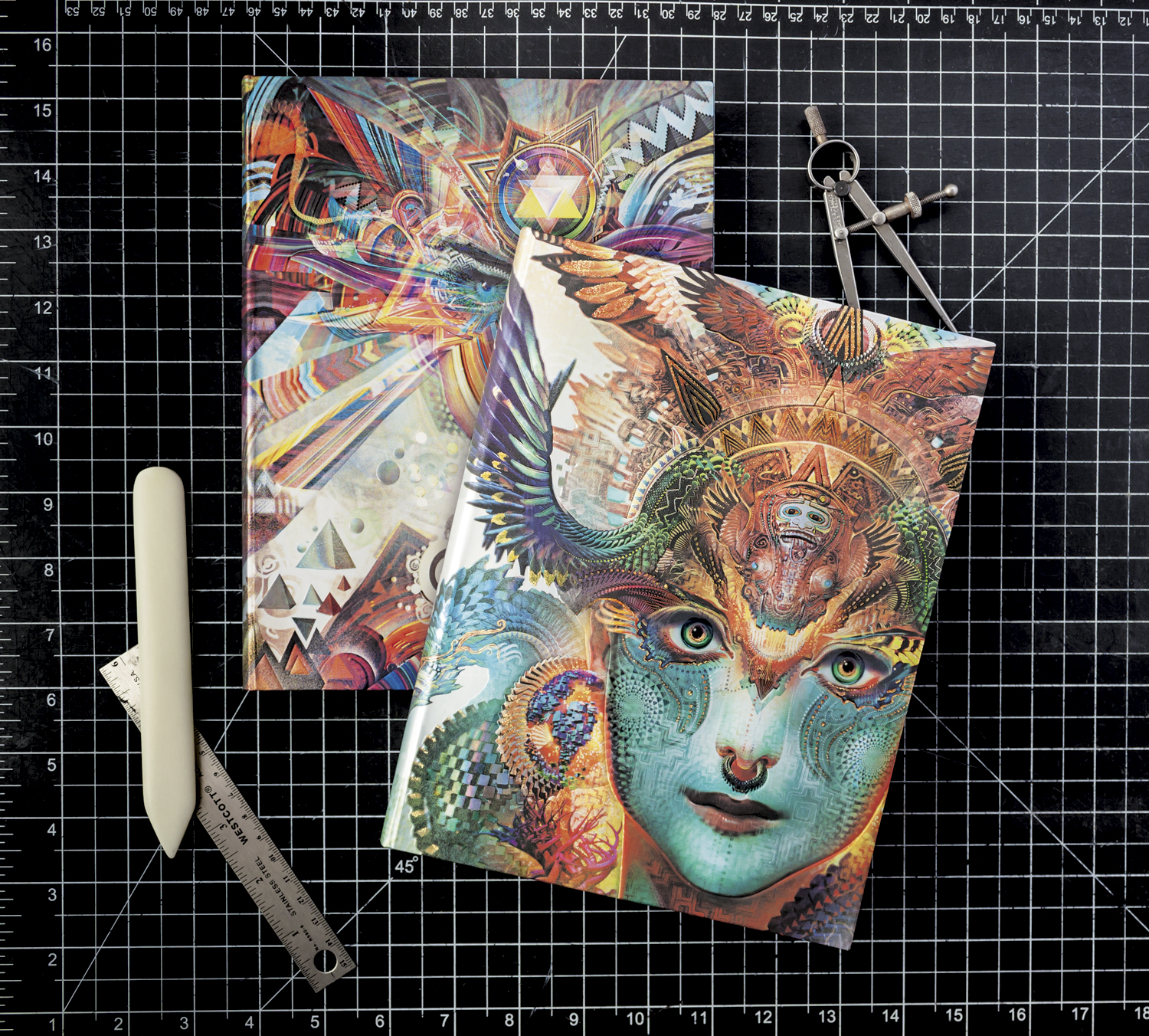

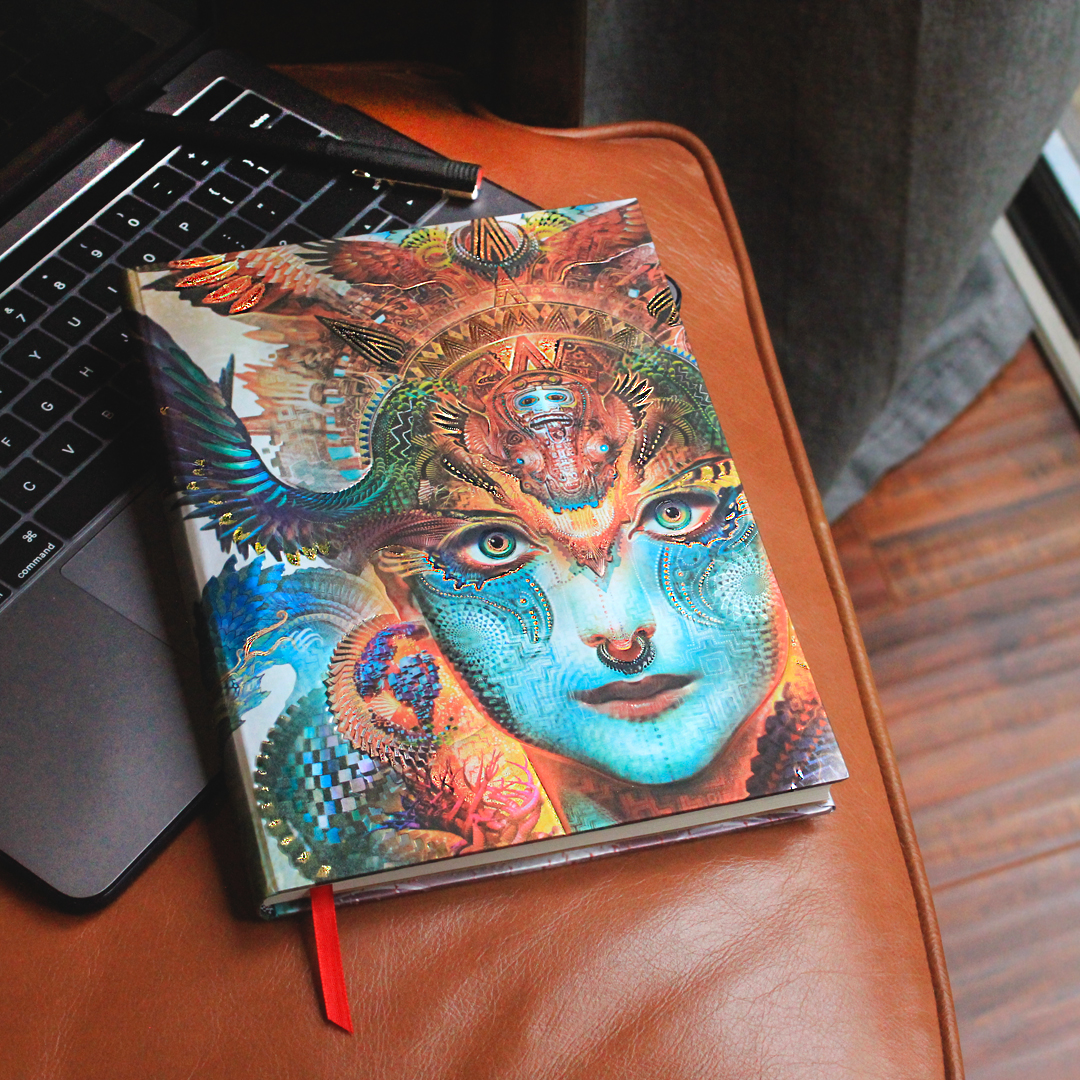
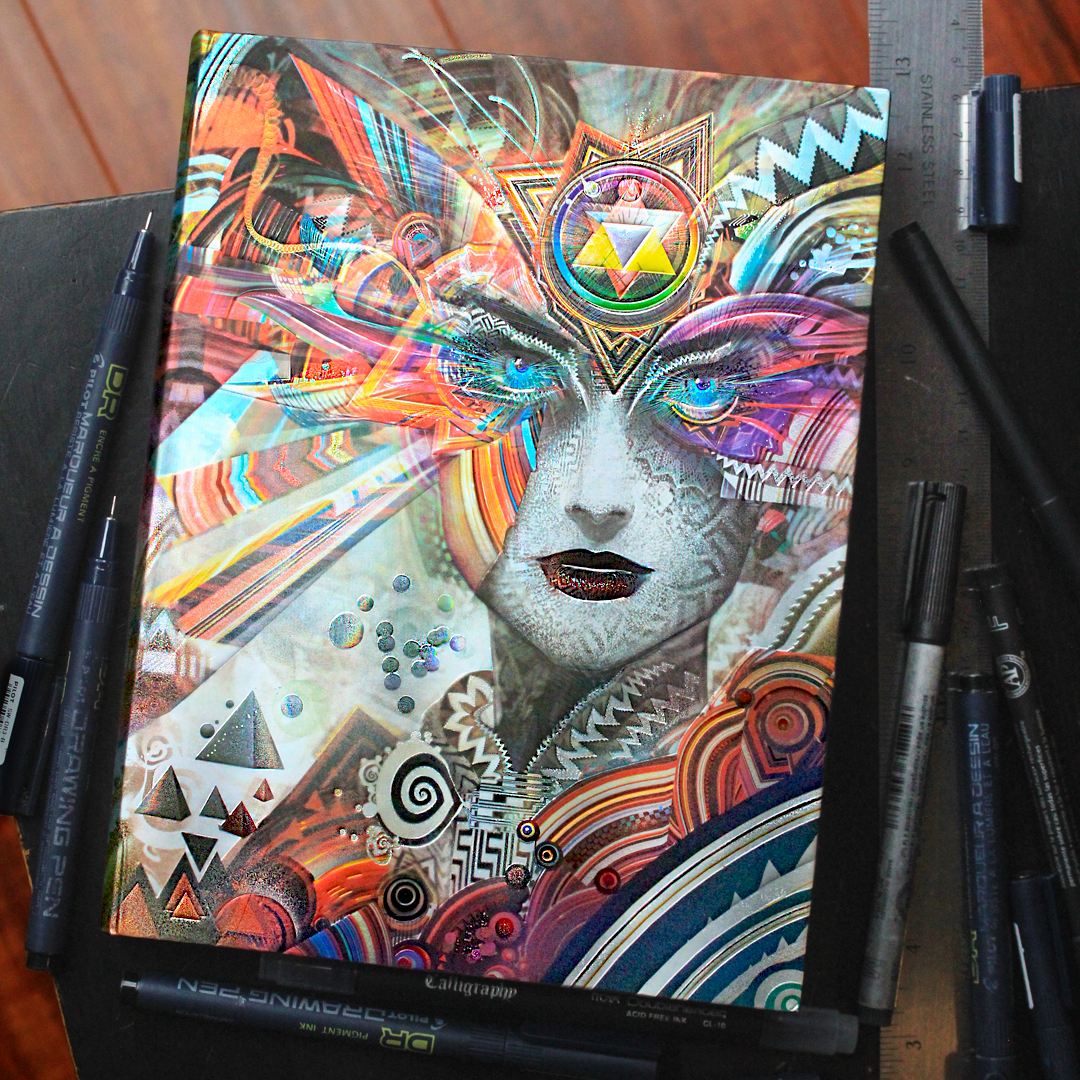
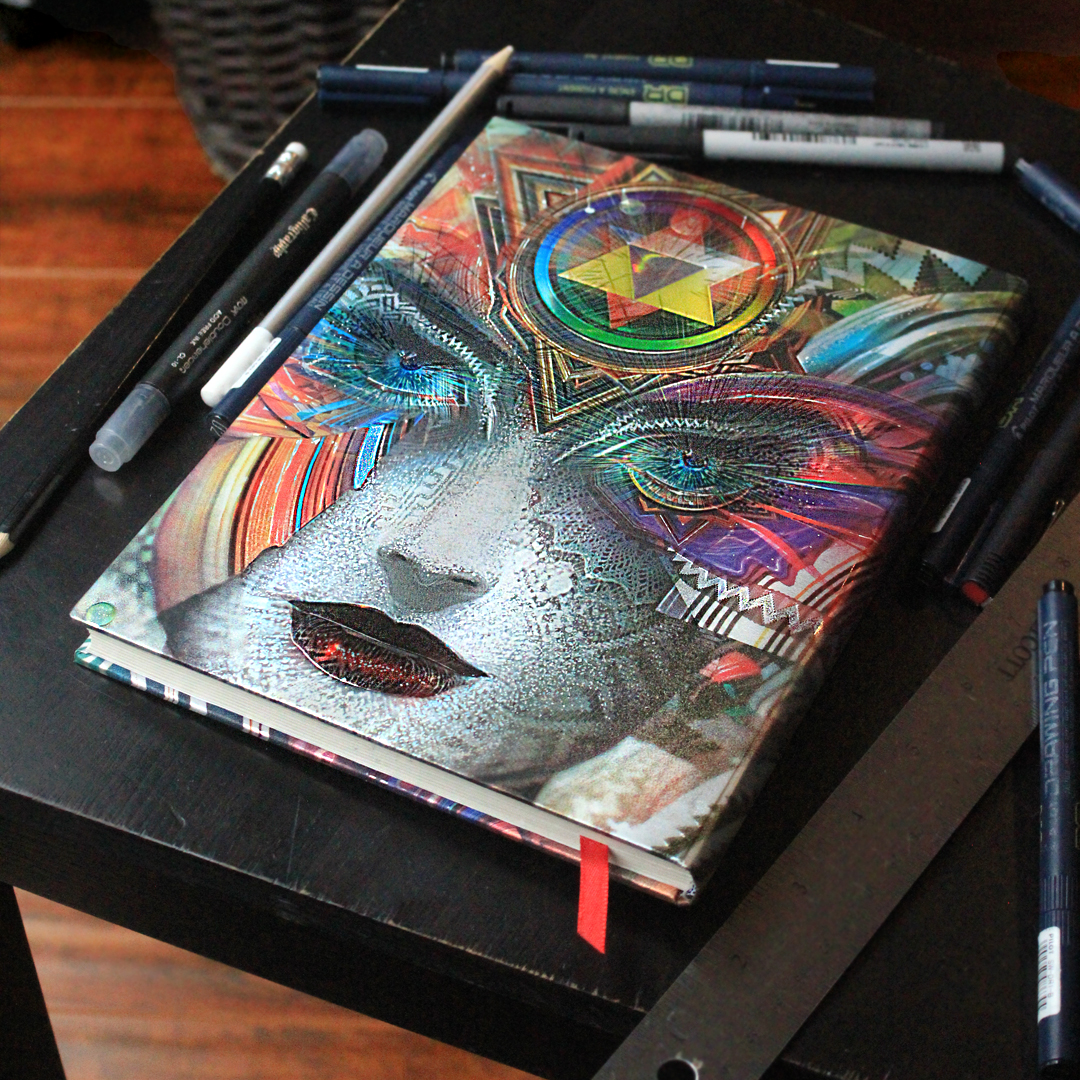
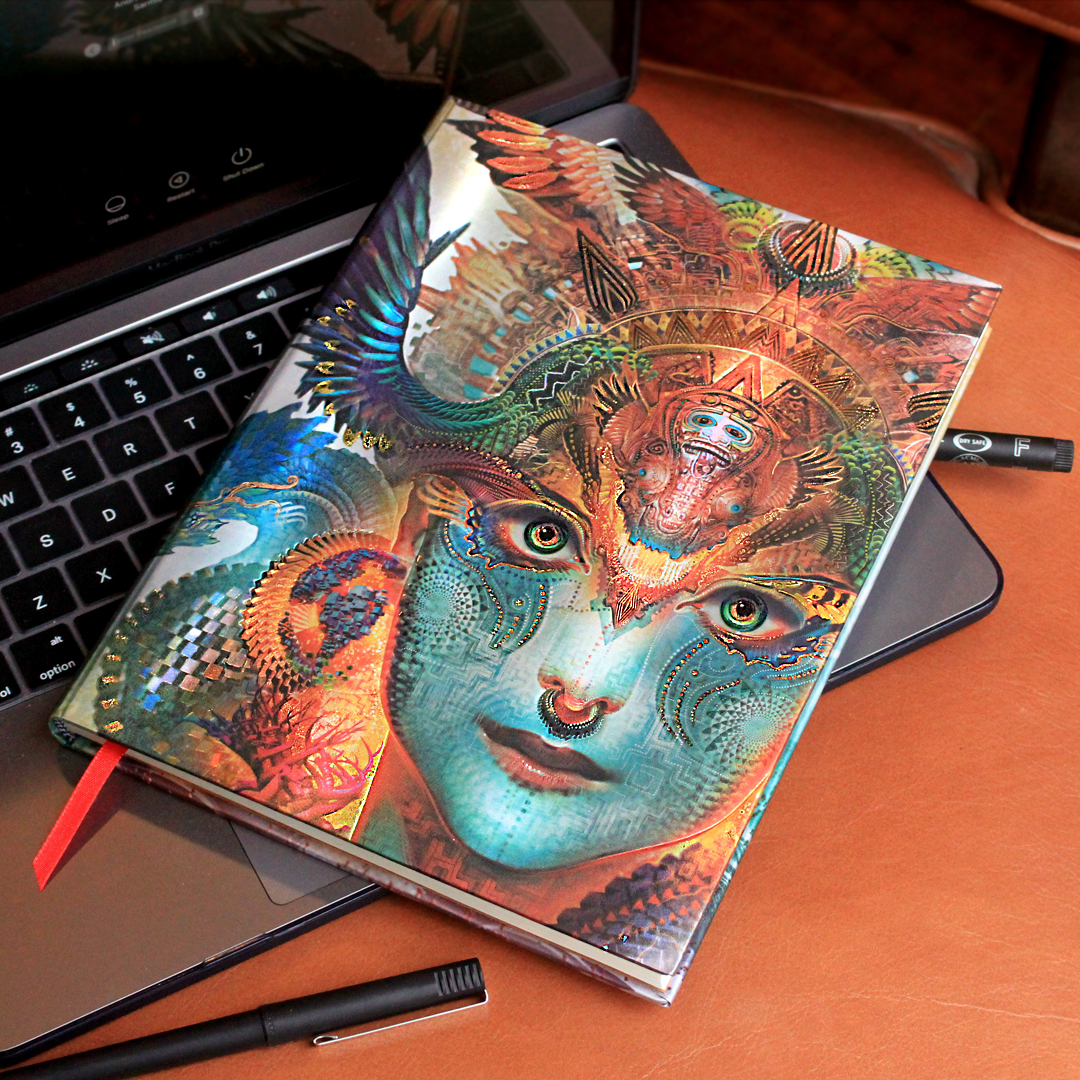
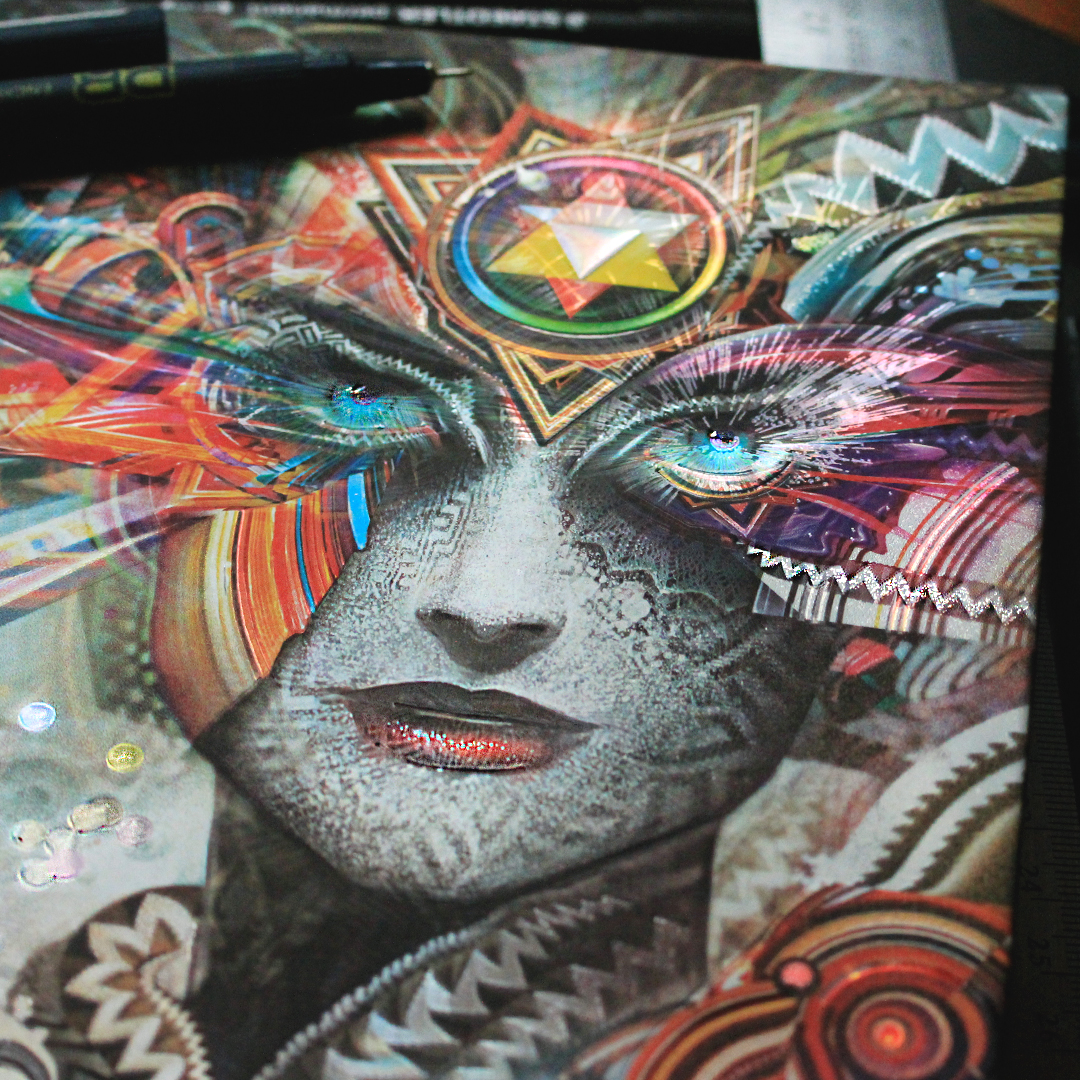
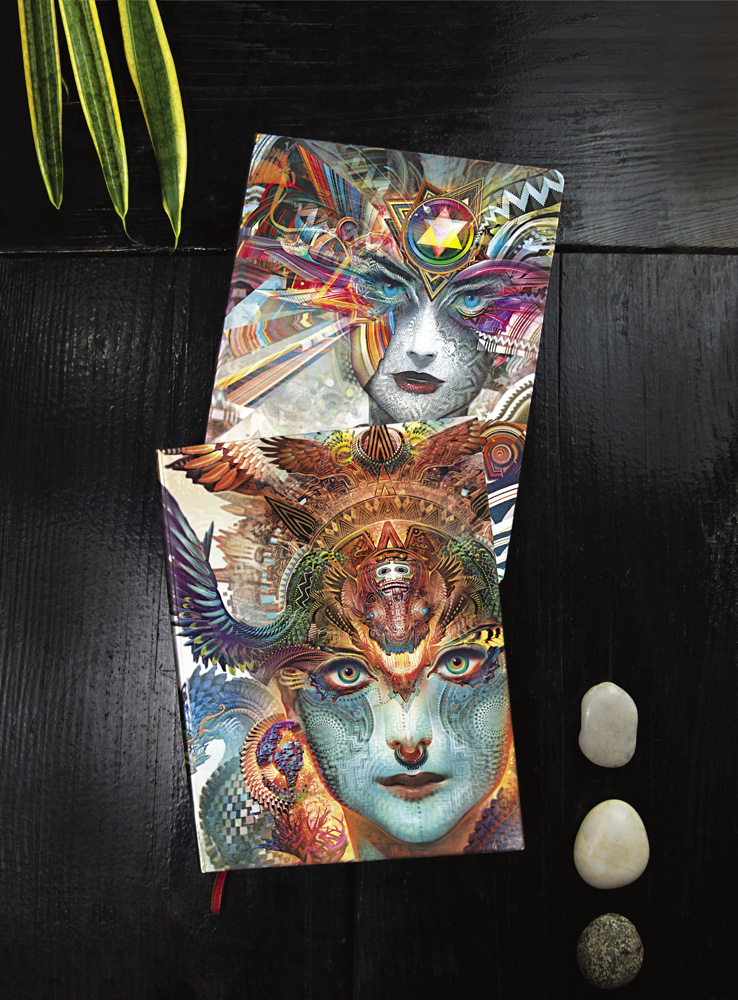
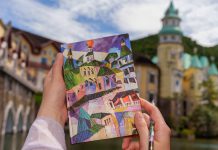


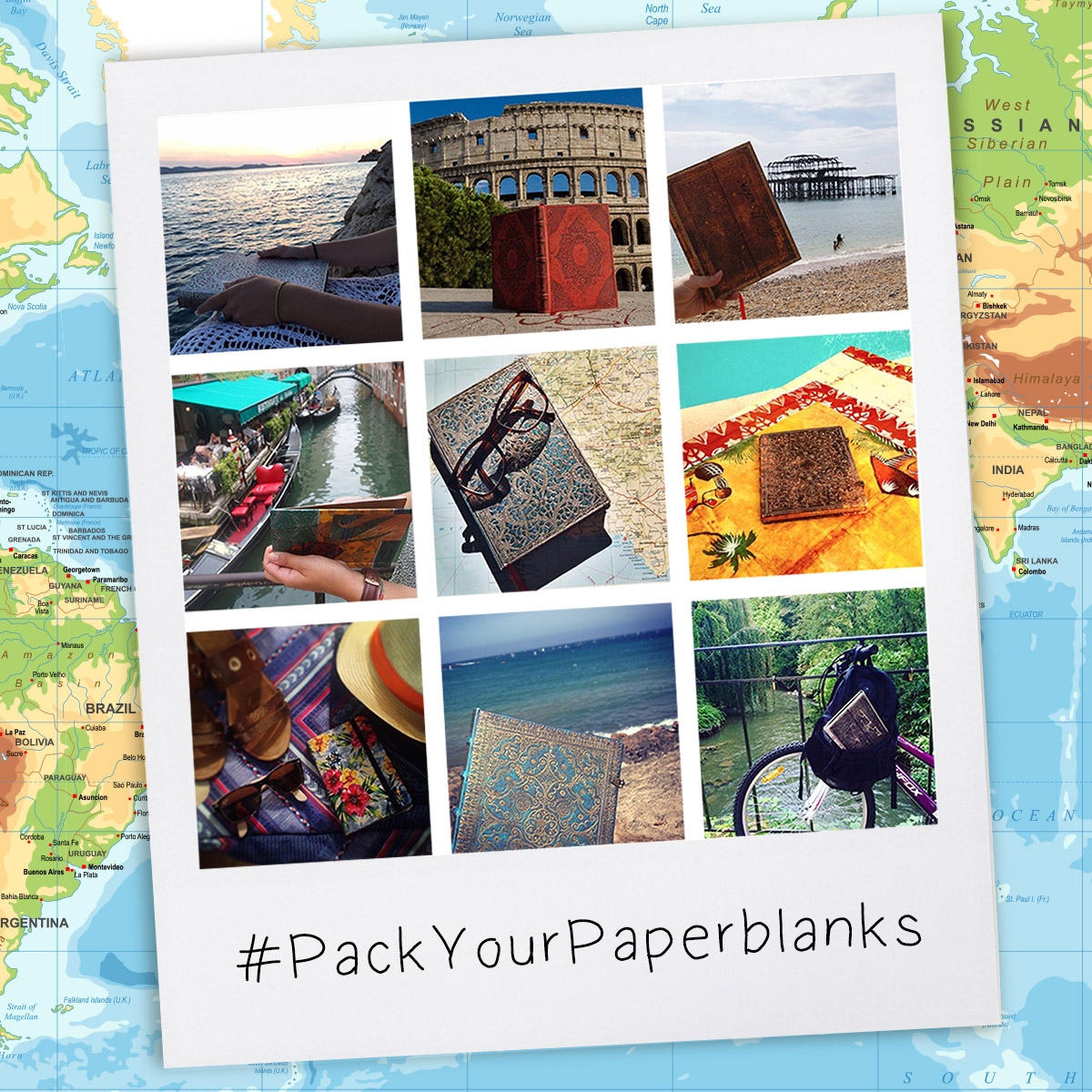
I’m adding these covers to my Christmas wish list right now! They’re absolutely gorgeous, and I love the message of selling an experience that Android Jones advocates! Coming from South Africa, and not really being active in the digital art world, I hadn’t actually heard of him until a South African illustrator that I use for my book covers told me that he was one of his huge inspirations. Reading this interview, and resonating with a lot of it, as well as with Android’s artwork, I can definitely see why!
Hi Nicky,
We’re so glad this interview as resonated with you! We loved speaking with Android and getting a sense of what drives him. The focus he puts on the “experience” is definitely evident in the artwork. We hope you enjoy the books and they continue to inspire you and your illustrator.
Best wishes,
The Paperblanks Team